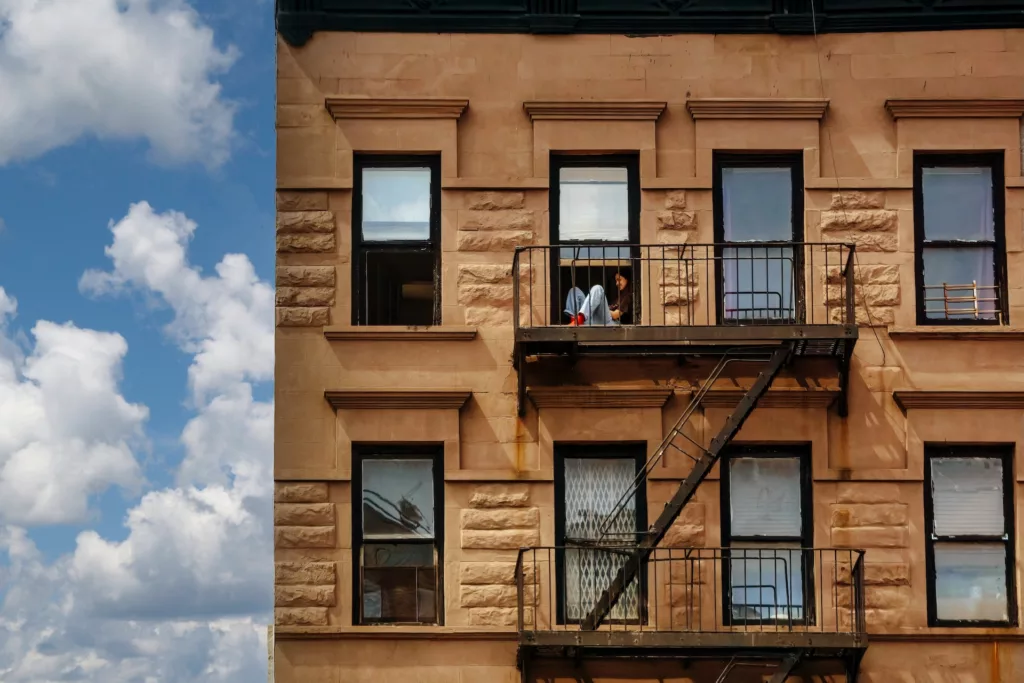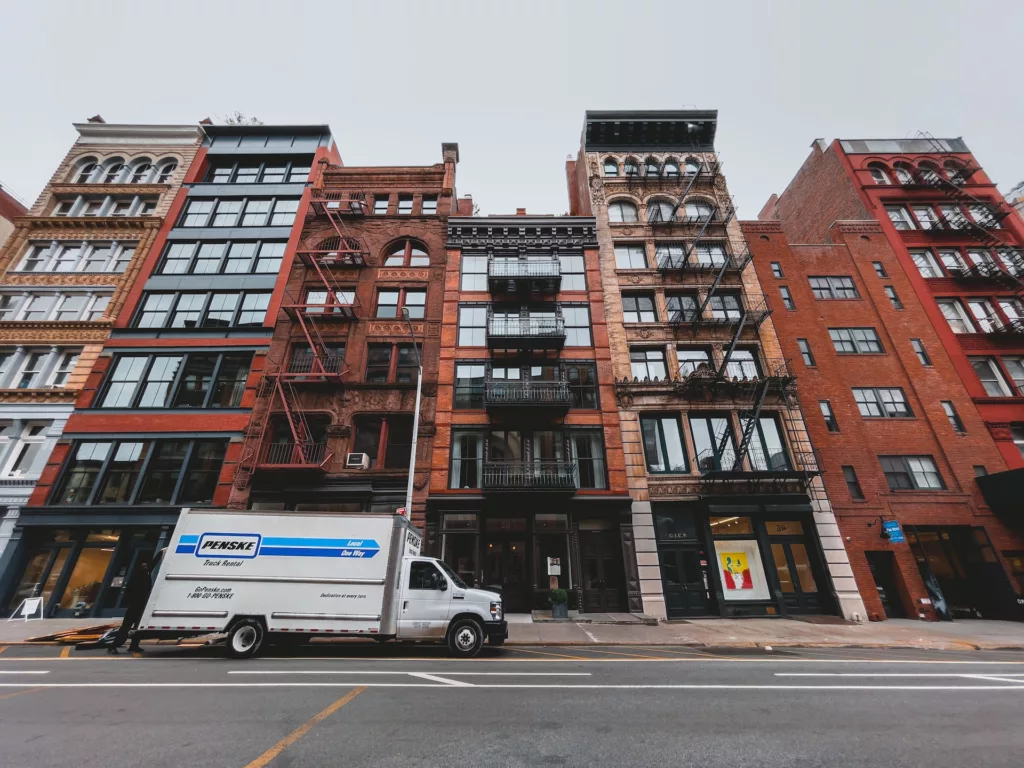
Estimated reading time: 8 minutes
Manhattan is one of the world’s most exciting and dynamic cities; it’s understandable why you’d want to move here.
There are plenty of reasons why people move to Manhattan, from plenty of job opportunities to convenience and accessibility, cultural attractions, and its proximity to amenities.
Of course, there are also some downsides to living in Manhattan, such as the high living costs, but for many people, the benefits outweigh the drawbacks.
Table of Contents

Research the Neighborhood
Consider factors such as safety, cost of living, transportation, and proximity to work or school when choosing a neighborhood.
Some best neighborhoods in Manhattan include;
Upper West Side
The Upper West Side comprises beautiful brownstones, excellent restaurants, and cultural attractions such as Lincoln Center and the American Museum of Natural History. It is generally less expensive than the Upper East Side but still offers a high quality of life.
Upper East Side
If you want to live in an upscale neighborhood with high-end shops, museums, and luxury apartments, consider living in the Upper East Side.
It is generally more expensive than other areas of Manhattan but offers easy access to Central Park and the East River. The Upper East Side is popular with families and professionals who value luxury, convenience, and safety.
SoHo
SoHo is a trendy neighborhood known for its upscale boutiques, galleries, and restaurants. It has a lively nightlife scene and is popular with young professionals and artists. SoHo is generally more expensive than other neighborhoods but offers a unique blend of culture and convenience.
Lower East Side
The Lower East Side is a trendy neighborhood with a lively bar scene, eclectic boutiques, and a mix of old-school and new restaurants. It is generally more affordable than other neighborhoods in Manhattan and one of the best neighborhoods in NYC for young professionals and artists who value nightlife and cultural diversity.
Prepare for Your Move to Manhattan

- Budget for the move
- Find a place to live
- Set up utilities
- Getting Around
Budget for the move
Moving to Manhattan can be expensive, so it’s important to budget for costs such as rent, security deposit, utilities, and moving expenses. Factor in the cost of living in Manhattan, which is generally higher than in other parts of the country.
Find a place to live
Start searching for apartments or houses that fit your budget and needs in the neighborhood you want to live in. Be prepared to act quickly, as apartments in Manhattan can rent quickly.
Set up utilities
Set up utilities such as electricity, water, and internet before you move in. Some buildings may include these in the rent, while others may require you to set them up on your own
Getting Around Manhattan
The MTA New York City Transit runs the rail and bus system in New York and its five boroughs. To get around on subways and buses, you need a MetroCard and put in a minimum of $5.50 on it and an initial card fee of $1 when buying it.
A local bus or single subway ride costs $2.75 when you use MetroCard and $6.75 for an Express bus ride. You can buy a SingleRide card at $3, a pay-per-ride card, or an unlimited MetroCard. A 7-day pass goes for $30 and $127 for a 30-day access.
- Subways: Subway trains operate 24 hours every day. There are 121 subway stations in Manhattan, allowing you access to all five boroughs. Get the MTA’s Trip planner to plan and customize your route.
- Buses: Like the subway, MTA’s buses accept MetroCards, and you can transfer buses within two hours after paying your fare. Most buses run 24 hours, about every 5-10 minutes. Ensure you check for overnight service on your route.
- Ferry: You can get uptown and downtown Manhattan through the ferry system and across the rivers to Brooklyn, Queens, and Staten Island. The system consists of the NYC Ferry, the Staten Island Ferry, and the NY Waterway.
- Taxis: The yellow taxis are available 24 hours a day with a minimum metered fare of $2.50 and 50 cents more for every fifth of a mile. You can hail a taxi outside a major hotel or anywhere in the streets of Manhattan.
- Rideshare: There are several ridesharing apps available in Manhattan, including Uber, Lyft, Via, Juno, and the Drivers Co-op. Uber and Lyft offer carpooling options.
- Biking: Explore Manhattan on a bike. There are numerous bike paths and parks to ride in. The city’s bike-sharing system, Citi Bike, operates stations in Manhattan where you can unlock a bike with daily, 3-day, and annual passes. Rent a bike from Blazing Saddles or Unlimited Biking and explore the city on two wheels.
Cost of Living in Manhattan
Manhattan is known for being one of the most expensive places to live in the United States, and the cost of living reflects that.
Housing
The average cost of renting an apartment in Manhattan is $4,501. Prices vary depending on the neighborhood, size, and quality. Some areas are more affordable than others; explore different neighborhoods and consider shared living arrangements to reduce costs.
Food
Eating out in Manhattan can also be quite expensive. A typical meal at a mid-range restaurant can cost around $25 per person, while higher-end restaurants can cost much more.
Grocery shopping is another option, but prices at local supermarkets tend to be higher than in other parts of the country due to the high rent and transportation costs. Shopping at large grocery chains, such as Trader Joe’s or Costco, can help you save money on your food budget.
Entertainment
Manhattan offers a wide range of entertainment options, from Broadway shows to museums and shopping. Ticket prices for Broadway performances range from $100 to over $500, while museum admissions range from free to $25 per person. Many free entertainment options are also available, such as visiting Central Park or attending a free concert.
Tips for Finding Deals
- Use coupon websites or apps such as Groupon or RetailMeNot to find discounts on local restaurants, entertainment, and shopping.
- Shop at discount stores such as T.J. Maxx, Marshalls, and Nordstrom Rack for discounted clothes and home goods.
- Use loyalty programs and store credit cards to save money on groceries and everyday purchases.
- Take advantage of happy hours and lunch specials to save money on dining out.
Attractions in Manhattan

Attractions in Manhattan include museums, such as the Metropolitan Museum of Art and the American Museum of Natural History, Broadway theaters and shows, and restaurants offering diverse cuisines.
There are plenty of free attractions, including Central Park, the High Line, and the 9/11 Memorial. There are also free concerts, events, and festivals throughout the year.
Pros and Cons of Moving To Manhattan
Pros
- Numerous opportunities for business, personal, and professional growth
- Excellent amenities and public transportation
- A diverse and cosmopolitan community
- Plenty of entertainment options
Cons
- High cost of living
- It’s densely populated
Conclusion
Manhattan can be costly to live in, but you’ll have access to excellent amenities like schools and public transportation, an eclectic food scene, plenty of entertainment options, and a diverse community.
If you’re looking for somewhere to start over your life, grow your career, or even raise a family, there’s a perfect neighborhood in Manhattan where you can thrive.
For more resources about moving and living in Manhattan, visit nyc.gov and Manhattan Community Board.
FAQ
Living in Manhattan requires careful financial planning due to its high cost of living, which is one of the highest in the United States. The salary needed to live comfortably in Manhattan depends on various factors, including your lifestyle, housing preferences, and financial obligations. Generally, a good rule of thumb is that your rent should not exceed 30% of your income. Given the average rent for a one-bedroom apartment in Manhattan can range significantly depending on the neighborhood, a salary of at least $100,000 to $120,000 might be a starting point to live comfortably while still being able to save and enjoy what the city has to offer. This figure can vary widely based on individual circumstances and lifestyle choices.
Age is more of a mindset when it comes to moving to a new city, and New York City, with its diverse and dynamic population, is no exception. There is no age limit to appreciating what the city has to offer, from career opportunities to social and cultural experiences. Many people move to NYC at various stages of life for different reasons, including career moves, personal growth, or simply the desire for a change of scenery. In fact, moving at an age where you might have more resources and a better sense of what you want in life could make the transition smoother.
A salary of $200,000 is considered very good in Manhattan and is well above the median household income for the area. This level of income would allow for a comfortable lifestyle, providing the flexibility to choose housing in most neighborhoods, enjoy a vibrant social life, and take advantage of the cultural and recreational activities NYC has to offer. It also affords the ability to save and invest, contributing to financial security. However, individual financial goals and responsibilities, such as student loans, family obligations, or lifestyle choices, will impact how far this salary goes.
Explore More About New York City
- Every Brooklyn Neighborhood, Explained Like a Local
- 10 Best Neighborhoods to Live and Rent in New York City
- Brooklyn vs Manhattan: Comparing Cost, Lifestyle, and Livability for Renters
- Which NYC Neighborhood Should You Live In? Quick Quiz
- How to Avoid Rental Scams When Apartment Hunting Online
- Where and How to Find a Room for Rent in NYC Fast